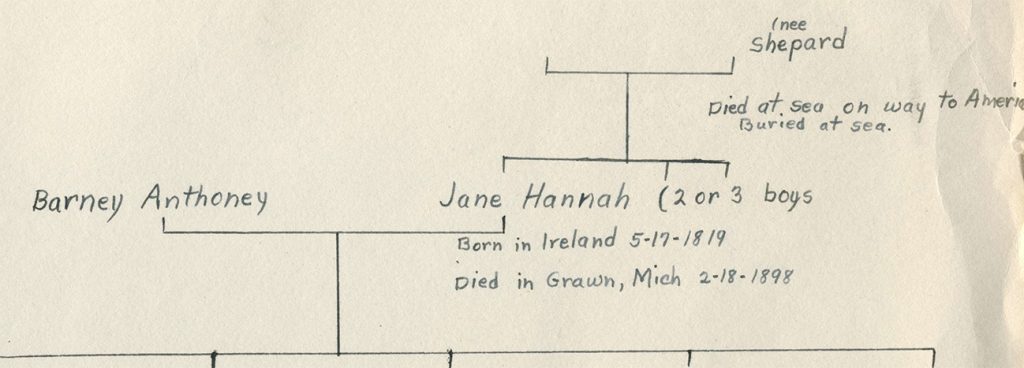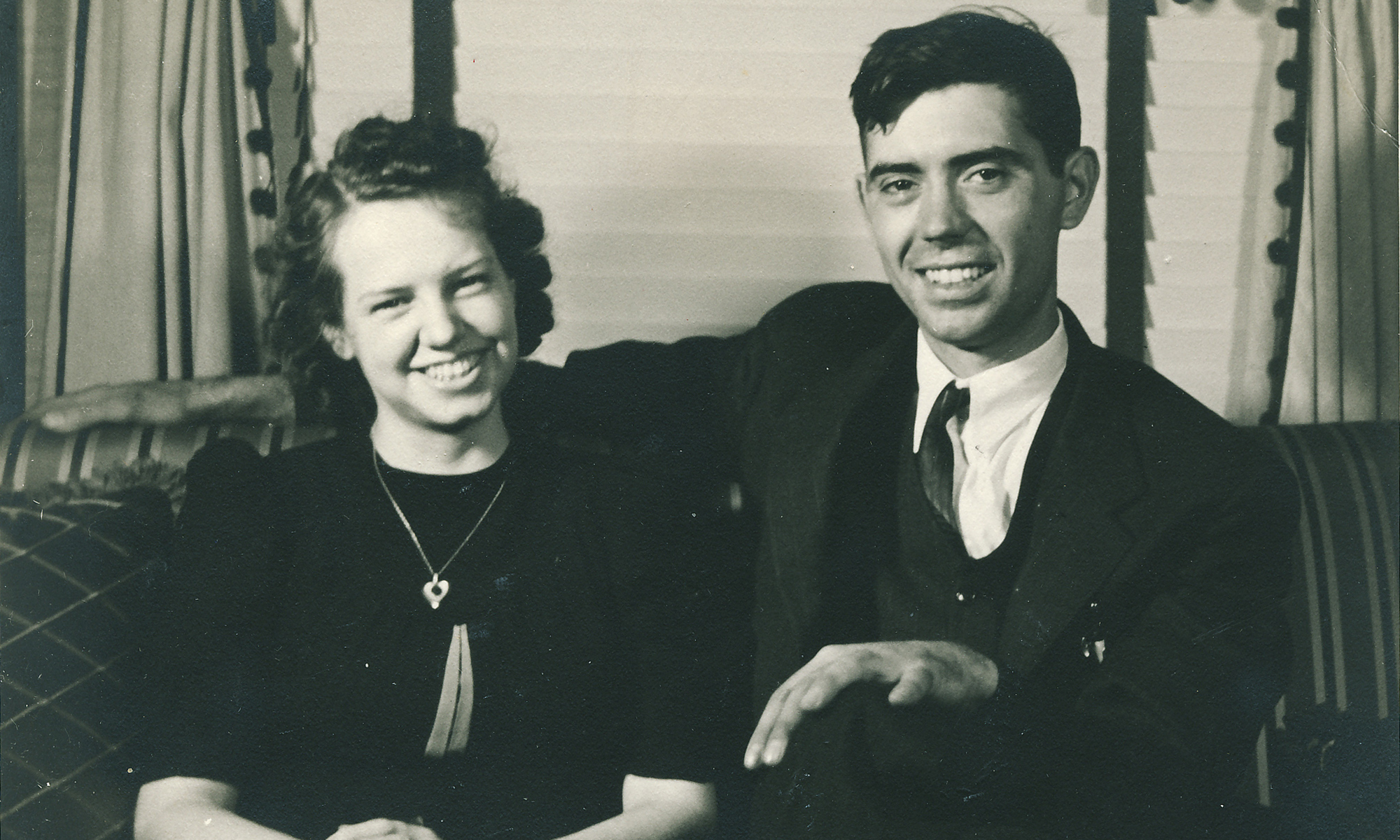Brick walls are a genealogical challenge. They’re places you seemingly can’t get past, the end of the line for a branch of the family tree. With diligence sometimes you can break through and step back another generation or two in time. But sometimes you’ve gotta acknowledge that banging your head continuously against a brick wall is only going to result in brain trauma. That’s when closure is a good thing.
After years of sifting through myriad sources, structuring queries in every conceivable permutation, revisiting sites for newly posted information, and contacting other family historians to no avail, it’s time to throw in the towel on the last of the Mystery Ladies of our family.
The Mystery Lady is Jane Hannah, wife of Barney Anthony, my mom’s great-grandmother. Family notes said Jane was born in Ireland in 1819, had two or three brothers, and that her mother, who’s maiden name was Shepard, died on the voyage to North America and was buried at sea.

I wanted to find exactly where Jane was born in Ireland, her father’s name and fate, her mother’s given name, when Jane sailed to the west, where she landed, how she met Barney, and when and where they were married. If that would help me go farther back into the Irish family, so much the better.
But it didn’t happen.
The realization that this really was a brick wall hit me after reading an email from a librarian in Jefferson County, New York. He couldn’t find anything on Jane either, and he went on to explain:
“This is in reply to your email seeking any marriage record for Barney & Jane; and any record of her birthplace in Ireland, parents and emigration.
“Since this [marriage which occurred around 1839] is before the first period of NYS vital statistics, 1847-1849, there would be no official marriage record. They are also not listed in our Jefferson County church members index or in any of the surviving records of the Cape Vincent churches. I also checked our Marriage extracts from early Jefferson County newspapers and nothing there either.”
He continued, “There is no record in our Jefferson Co. Naturalization file [from Jeff. Co. records] of either one [Jane or their first child, Sarah, who was born in Canada] being naturalized here. The only benefit it would have conferred on them would have been eligibility to vote but since that was not possible for women in this country until the 19th Amendment became part of the Constitution in 1920, many emigrant women did not seek to become citizens if it was during a period when marriage to a native-born male did not automatically confer it. The early 19th century did not have that provision.”
Well, heck, not only did this gentleman comb every conceivable record in the county, he flipped a switch in my head that maybe I was trying to chase down information that simply isn’t there. New York State didn’t keep birth, marriage, or death records before 1847; Jane wouldn’t have sought naturalization (which paperwork sometimes provides clues to origin and immigration); Canada didn’t keep ship passenger records before 1865; and Ireland, which lost most of its census records before 1861 in a fire, didn’t institute vital records before 1864.
You can continue to fish all summer on a lake, but if it ain’t got any fish in it, you aren’t going to reel anything in.
All was not lost, however. Given that the family note said Jane Hannah had two or three brothers, I looked through Jefferson County, New York censuses, naturalization records, and land records to see what I could find on any Hannah men in the area. The 1855 census showed two Hannah brothers, William and James, on the same page as Barney and Jane. William was three years older than Jane, James was a year younger than her. Hmm, that looked pretty promising.
Furthermore, the county deed records revealed that Barney’s father and the Hannah brothers had adjoining farms. That, I’m speculating, would explain how Barney and Jane met. I’d be willing to wager that William and James were indeed Jane’s brothers.
William, being a male and eligible to vote upon naturalization, sought naturalization in 1847. In his application he stated that he came from Ireland and arrived in Jefferson County in 1835. That predates Jane’s marriage by about four years, so the timing is good. The librarian explained that “he is listed as emigrating from Belfast, Ireland to the Town of Hounsfield, possibly on a ship coming up the St. Lawrence river to Sackets Harbor which was the likely port for that Town. He was resident in the Town of Lyme when he was naturalized on 23 Sep 1847. The Town of Cape Vincent was part of the Town of Lyme until 1849 so he could have been in that portion of Lyme that was adjacent to the St. Lawrence River, and which became Cape Vincent.”
That information was a three-fer:
(1) the Hannah’s came from northern Ireland and arrived in 1835;
(2) they likely arrived in Quebec and came down the St. Lawrence River;
(3) the split off of Cape Vincent from Lyme township explains how Anna Anthony, my mom’s grandmother, was recorded as born in Lyme in 1847. The Anthony farm was indeed near the St. Lawrence River and the area would have only been called Cape Vincent from 1849 on.
A little more research into William Anthony revealed that he, like his sister Jane, named his first daughter Sarah and first son Robert. Not only does that seem beyond coincidence, I believe it probably honored the memory of their parents and reveals the first names of Jane’s parents, though there is no way to prove it.
And so we reached the brick wall. True, we were able to read some writing on it, but no, there was no breaking through. At least now we have a sense of closure.
